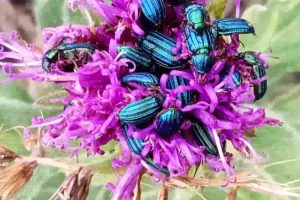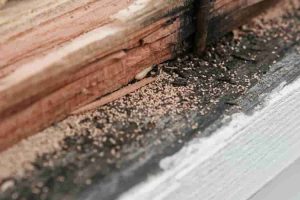Wild rabbits can be a significant issue in Australia, affecting both residential areas and agricultural lands. Effective wild rabbit pest control is crucial to protect our properties and maintain our ecosystem’s balance. These rabbits can cause extensive damage by burrowing, eating crops, and competing with native species for resources.
In our experience, combining several methods yields the best results. For example, destroying warrens and known rabbit harbors is an effective measure, complemented by trapping and other pest control activities. It’s important for landowners to take their responsibilities seriously and employ a mix of primary and supplementary control strategies.
Australian legislation, like the Catchment and Land Protection Act, mandates that landowners work to prevent the spread of these pests. We should also look at government initiatives and research efforts. For instance, studies on viruses like RHD and myxomatosis have been part of long-term efforts to manage rabbit populations effectively.
Understanding Rabbit Pests in Australia
Wild rabbits in Australia are a significant problem due to their impact on agriculture and the environment, the diseases they spread, and the legal measures and control programs in place to manage them.
The Impact of Wild Rabbits on Agriculture and Environment
European rabbits cause extensive damage to both crops and natural habitats. They eat a wide variety of vegetation, which can destroy food crops and native plants. This leads to serious economic losses for farmers and reduces biodiversity.
Rabbits also cause soil erosion by burrowing and grazing, which leads to the loss of topsoil. This makes it difficult for new plants to grow and exacerbates land degradation. In many areas, their presence has led to significant ecological shifts that are hard to reverse.
Diseases Affecting Rabbit Populations
Rabbit populations are affected by diseases like Myxomatosis and Rabbit Haemorrhagic Disease (RHD). These diseases were introduced as biological control measures to reduce rabbit numbers. Myxomatosis, introduced in the 1950s, and the Rabbit Calicivirus, introduced in 1995, have been effective but also lead to animal suffering.
Despite the success of these diseases in controlling rabbit populations, the viruses and rabbits continue to co-evolve. This evolutionary arms race means that new strains of the diseases or the rabbits become resistant, requiring constant monitoring and adjustments to control efforts.
Legislation and Control Programs
Australia has strict biosecurity measures and legislation in place to manage wild rabbits. Under the Catchment and Land Protection Act 1994, landowners must take steps to prevent and control rabbit populations on their properties. This legal framework emphasizes that pest management is not just the responsibility of the government but also of individual landowners.
Control programs often include a combination of methods such as poisoning, fumigation, and shooting, along with the aforementioned biological controls. These programs are vital for protecting both agricultural interests and the natural environment from the destructive impacts of wild rabbits.
Methods of Wild Rabbit Pest Control
Wild rabbits can be managed through a combination of chemical, biological, and physical control methods. Each approach offers different advantages and can be effective when implemented correctly. We will explore these methods in detail, highlighting the key tactics and strategies used to control wild rabbit populations.
Chemical Control Tactics
Baiting: One common chemical control method is baiting. Poisons like 1080 and pindone are commonly used. Pindone requires multiple doses, making it suitable for areas near the public. 1080 is more potent but must be handled with extreme care.
Fumigation: This involves using gas to target rabbit warrens. It’s effective for eliminating rabbits in their burrows. To perform fumigation safely, trained personnel are required.
Monitoring: Regular monitoring ensures that chemical control methods are effective. This involves checking bait stations and replenishing poison as needed.
Biological Control Strategies
Viruses: Biological control uses natural diseases to reduce rabbit populations. Among the most effective are the calicivirus (RHDV) and myxomatosis. These viruses spread quickly among rabbits, leading to high mortality rates.
Best Practice Management: We must follow ethical guidelines, ensuring that the use of biological agents is humane and environmentally safe. This prevents unnecessary suffering and protects other wildlife.
Monitoring for Resistance: It’s crucial to monitor rabbit populations for resistance to these biological agents. This involves capturing samples and testing for immunity, ensuring that control methods remain effective.
Physical Control Measures
Shooting: This method requires skilled shooters to humanely reduce small rabbit populations. Shooting is labor-intensive and suited for areas where other methods might not be practical.
Trapping: Cage trapping followed by humane euthanization can be effective for controlling rabbit numbers. It requires frequent checking of traps and skilled operators to ensure humane treatment.
Warren Destruction: By destroying warrens and known harbor sites, we can reduce safe spaces for rabbits to breed, making other control methods more effective.
Fencing: Installing rabbit-proof fences helps prevent rabbits from entering sensitive areas. It’s a long-term solution but requires regular maintenance to ensure its effectiveness.
These methods, when combined, can effectively manage wild rabbit populations and mitigate their impact on the environment and agriculture.
Wild Rabbit Control in Context
Controlling wild rabbits is vital for protecting native plants, native animals, and overall biodiversity. Our approach must balance efficacy with ethical considerations and involve local communities for long-term success.
Control Efficacy and Ethical Considerations
Effective rabbit control requires both immediate and long-term strategies. Mechanical methods like warren destruction and trap-and-shoot can yield short-term results. Biological controls, such as introducing diseases like RHD and myxomatosis, have shown success but must be managed to avoid undue suffering.
Humane practices are essential. Cage trapping, followed by humane euthanasia, is a method recommended by RSPCA for its balance of efficacy and animal welfare. We must use skilled operators to efficiently carry out these tasks to maintain high standards of animal welfare.
Engaging with Local Communities and Landowners
Working with local communities and landowners is crucial. Biosecurity officers often coordinate pest control efforts, ensuring everyone fulfills their responsibility to manage wild rabbits. Education and training in best practice management techniques are key aspects of these efforts.
Local participation in control programs helps ensure compliance and effectiveness. Community engagement creates a coordinated approach, making it easier to manage and monitor rabbit populations. For example, Local Land Services emphasizes destroying rabbit habitats like old log piles and dense weed infestations.
Future Directions in Wild Rabbit Management
Future control strategies may include genetic approaches and improved biological controls. Genetic resistance in rabbit populations remains a challenge, requiring continuous development of new strategies. Research into viruses and biocontrol agents will likely play a role in future management.
Long-term control also means sustaining engagement with landowners and communities. Emphasizing conservation and biodiversity helps connect the task of rabbit control to broader environmental goals. We continuously revise our tactics based on new scientific findings and practical experience to ensure our methods remain effective and humane.
On-Time Service

5 STAR SERVICE BASED ON 100+ GOOGLE REVIEWS
PET & FAMILY FRIENDLY TREATMENT

ALL YEAR-ROUND PROTECTION
Take Back Control Now
8
REASON TO CHOOSE SAFE PEST CONTROL
- Guarantee protection all year-round
- 30 Years Collective Experience
- An impeccable reputation across Sydney's Suburbs
- Certified treatments & written Warranty On all work carried out
- Family Owned & Operated
- Rated #1 Pest Control In Sydney NSW
- No Mess, No Smell
- Family & Pet Friendly Treatments
REQUEST A QUOTE









